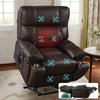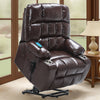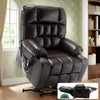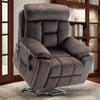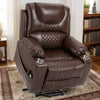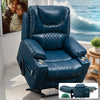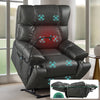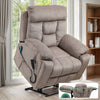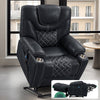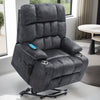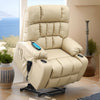Understanding the Needs of Elderly Mobility
The Importance of Wheelchair Usability and Comfort
Wheelchair usability and comfort are crucial for elderly mobility. A well-designed wheelchair can improve quality of life. It helps seniors maintain independence and stay active. Comfort is key to prevent pain and discomfort during use. A comfortable wheelchair encourages regular use and promotes better health outcomes. Usability features like easy-to-use brakes and adjustable parts are essential. These features make the wheelchair safer and more convenient for daily use. A user-friendly design also reduces strain on caregivers who assist with mobility.

Assessing Mobility: What to Consider Before Purchase
Before buying a wheelchair, assess the user's mobility needs. Consider their physical abilities and limitations. Think about where the wheelchair will be used most often. Indoor use may require a more compact design. Outdoor use needs sturdy wheels and better suspension. Evaluate the user's ability to self-propel or if they need assistance. Check if they can transfer in and out of the chair independently. Consider any specific medical conditions that may affect wheelchair use. These factors will help determine the most suitable type of wheelchair.
Identifying the Unique Needs of Elderly Persons
Elderly persons often have unique mobility needs. Some may have arthritis, which affects grip strength. Others might have vision or hearing impairments. Balance issues are common among seniors. Some may need support for specific body parts due to injuries or conditions. Consider the person's height and weight for proper sizing. Think about their daily activities and how the wheelchair will fit into their routine. Mental acuity is also important when choosing control options. Understanding these unique needs ensures a better wheelchair match.
Key Features to Look for in a Wheelchair for the Elderly
Ergonomic Design: How to Measure Comfort and Adjustability
Ergonomic design is vital for elderly comfort in wheelchairs. Look for adjustable seat height, depth, and angle. These features ensure proper posture and pressure distribution. Armrests should be padded and adjustable in height and width. Footrests need to be adjustable to support legs at the right angle. The backrest should provide good lumbar support and be angle-adjustable. Check for cushioning quality in the seat and backrest. Some wheelchairs offer customizable cushions for extra comfort. Consider the overall weight of the chair for easy maneuvering.

Performance and Mobility: Wheelchair Propulsion and Braking Systems
Wheelchair performance greatly affects an elderly person's mobility. Look for smooth-rolling wheels with good traction. Large rear wheels make self-propelling easier for those with arm strength. Smaller front casters improve maneuverability in tight spaces. Check the turning radius for indoor use. Braking systems should be easy to engage and reliable. Some chairs offer one-hand braking for users with limited dexterity. Power-assist options can help with longer distances or inclines. Consider the terrain where the chair will be used most often.
Safety and Convenience: Additional Features That Matter
Safety features are crucial in wheelchairs for the elderly. Anti-tip bars prevent backward falls. Seat belts provide extra security during movement. Look for chairs with stable frames and durable construction. Convenience features can greatly improve daily use. Foldable designs make transport and storage easier. Removable armrests and footrests help with transfers. Some chairs have built-in storage for personal items. Elevating leg rests can help with circulation and comfort. Consider add-ons like cup holders or trays for added convenience.
Making the Right Choice: Wheelchair Selection Process
Expert Tips for Selecting Wheelchairs for Different Elderly Mobility Needs
When selecting a wheelchair, consider the user's specific mobility needs. For those with good upper body strength, manual wheelchairs are a good option. They provide exercise and are lighter. Power wheelchairs suit those with limited arm and hand function. For part-time users, transport chairs are lightweight and easy to fold. If the user can walk short distances, a rollator-wheelchair combo might work well. For those with respiratory issues, look for chairs with elevated seating positions. Always involve the user in the selection process if possible. Their comfort and preferences are key to ensuring regular use.

Where to Look: Finding High-Quality Wheelchairs in the United States
In the US, there are many places to find quality wheelchairs. Medical supply stores often have a wide range of options. They also provide expert advice on selection. Online retailers offer convenience and often have user reviews. Some popular sites include Amazon, 1800Wheelchair, and Spinlife. Local pharmacies may stock basic models or can order specific ones. Durable medical equipment (DME) suppliers specialize in mobility aids. They often have showrooms where you can test different models. Some hospitals and rehabilitation centers have resources for wheelchair selection.
Long-Term Care: Evaluating the Cost and Value of a Wheelchair Investment
When evaluating wheelchair cost, consider it a long-term investment. Higher quality chairs may cost more upfront but last longer. They often provide better comfort and features. Look at warranty terms and the availability of replacement parts. Consider maintenance costs over time. Some chairs require regular servicing. Check if insurance covers part or all of the cost. Medicare may cover wheelchairs if prescribed by a doctor. Compare rental costs to purchase prices for occasional use. Remember, a good wheelchair can prevent injuries and improve quality of life. This makes it a valuable investment in long-term health and independence.








